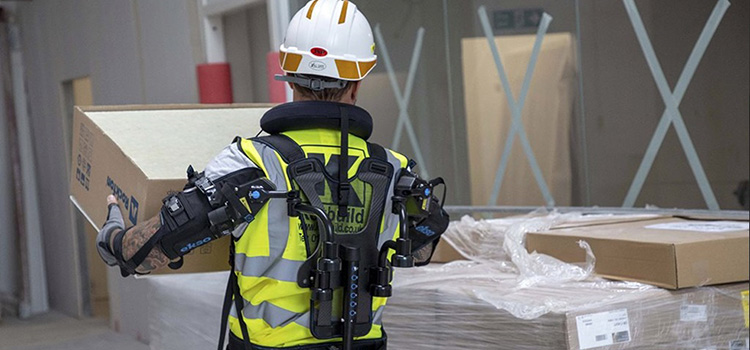
New robotic exoskeleton vest trialled on-site
A new robotic vest that is designed to increase the strength and support of workers’ arms is being trialled on-site. Willmott Dixon is the first company in the UK construction industry to trial the exoskeleton vest on a live site after teaming up with robotics firm Ekso Bionics.
The EksoVest is being used on-site at Cardiff West Community High School and is supposed to support worker’s arms during heavy lifting, enabling them to lift more but feel less exerted.
The Cardiff site was chosen to trial the newly developed technology due to the range of technical activities required to complete the build.
The vest costs £5,650 and was funded by Willmott Dixon’s central research and development fund, Eureka.
As reported in Construction News, Neal Stephens, Managing Director for Willmott Dixon Wales and South West, said: “We’re thrilled to be the first construction company in the UK to trial the EksoVest. The wellbeing of our people and supply chain is always our number one priority.
“The EksoVest technology should lead operatives to feel less exerted, meaning improved wellbeing and productivity. This investment not only demonstrates to our supply chain the importance we place on health and safety, but we hope the development of the Eureka fund also shows Willmott Dixon’s enthusiasm for technology and innovation within the construction industry.”
Exoskeletons can be either passive or active. Passive vests are those that do not use actuators, motors, or batteries to help with lifting or hauling; whereas active vests do use these to aid in activities.
In the construction industry, passive systems would be more suitable as the exoskeletons are less expensive and actuators are not necessary to relieve the exoskeleton user of a payload or bodyweight.
Some think these vests will help to make the construction site a safer and more efficient place and ABI Research predicts the robotic exoskeleton market will reach $1.8 billion in 2025.
What do you think about the use of exoskeletons? Join the discussion and let us know over on our social media: LinkedIn or Twitter
Image credit: Constructionnews.co.uk


